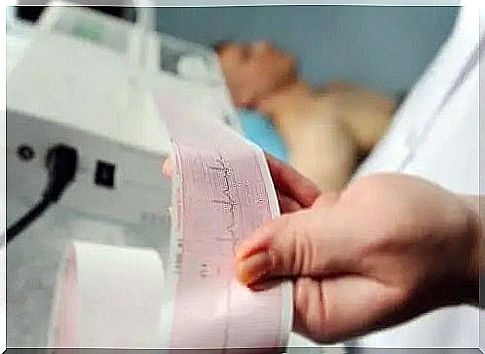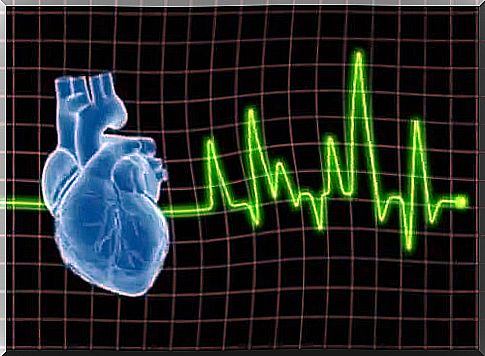How Is The Electrocardiogram (EKG) Interpreted?

An electrocardiogram or EKG is one of the most commonly used tests, especially in emergency rooms and internal medicine. The correct interpretation is decisive in many circumstances. Although it is a very common test, its correct reading is not as simple as it seems at first glance. So how is the electrocardiogram (EKG) interpreted?
The electrical signals of the heart are recorded on the electrocardiogram. Each heartbeat emits an electrical signal that is recorded by the EKG. Therefore, the test allows medical professionals to see the activity of the heart and detect possible changes.
In isolation, an electrocardiogram is only a linear representation. This shows a chart that a cardiologist must interpret. To do this, it must follow a series of steps, which I will describe below.
Aspects to consider when interpreting the electrocardiogram
1. Verification of reliability
2. Calculation of heart rate

Heart rate is the most important information you should extract from an electrocardiogram. Some EKGs calculate it automatically. If not, there are a few simple ways to do this.
In essence, heart rate is the number of contractions that the heart undergoes in order to pump blood to the rest of the body. Knowing this value, you can determine if there is tachycardia or bradycardia, very important aspects for identifying possible abnormalities and heart problems.
3.
She p
4.

This is one of the most difficult steps in interpreting an electrocardiogram.
The cardiac electrical axis corresponds to the direction that the electrical stimulus follows as it passes through the ventricles. These data provide information on possible intraventricular conduction defects.
5. Evaluation of the ST segment
The QRS complex is the sum of the electrical discharges of all ventricular cells. The T wave represents the repolarization or electrical recovery of the ventricles. The distance between the QRS complex and the T wave is what is called the ST segment.
Sometimes the ST segment goes up or down. But if these values are not significant, then most likely there is no problem. If the values exceed the minimum range, then the presence of ischemic heart disease is very likely.
6.

It is also important to perform an analysis of each wave and the intervals that have not yet been evaluated.
The PR interval and the QT interval are particularly important. When the PR interval is short, it means that there is an accelerated atrioventricular conduction. Instead, when it is long, the leadership has slowed down.
The QT interval represents the duration of ventricular electrical systole. In addition, it includes the QRS interval, ST segment and T wave. It is also closely related to heart rate. For this reason, when it is fast, the intervals decrease and vice versa.
7. Schematic synthesis when interpreting the electrocardiogram
After performing all these steps, doctors can identify most heart problems. Starting from this point, the specialists can determine the course of the necessary actions and the treatment options.









